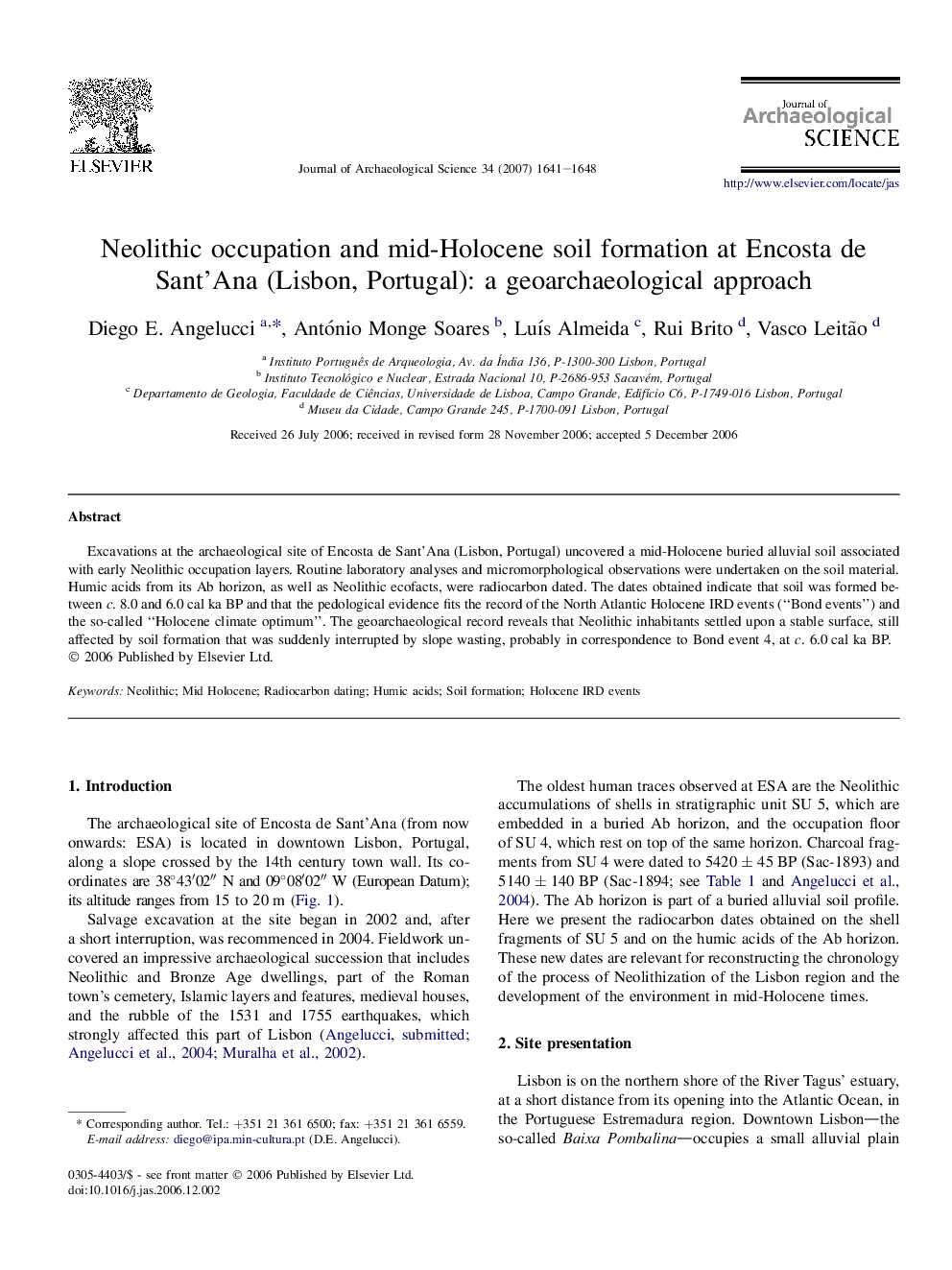| Article ID | Journal | Published Year | Pages | File Type |
|---|---|---|---|---|
| 1036363 | Journal of Archaeological Science | 2007 | 8 Pages |
Excavations at the archaeological site of Encosta de Sant'Ana (Lisbon, Portugal) uncovered a mid-Holocene buried alluvial soil associated with early Neolithic occupation layers. Routine laboratory analyses and micromorphological observations were undertaken on the soil material. Humic acids from its Ab horizon, as well as Neolithic ecofacts, were radiocarbon dated. The dates obtained indicate that soil was formed between c. 8.0 and 6.0 cal ka BP and that the pedological evidence fits the record of the North Atlantic Holocene IRD events (“Bond events”) and the so-called “Holocene climate optimum”. The geoarchaeological record reveals that Neolithic inhabitants settled upon a stable surface, still affected by soil formation that was suddenly interrupted by slope wasting, probably in correspondence to Bond event 4, at c. 6.0 cal ka BP.
